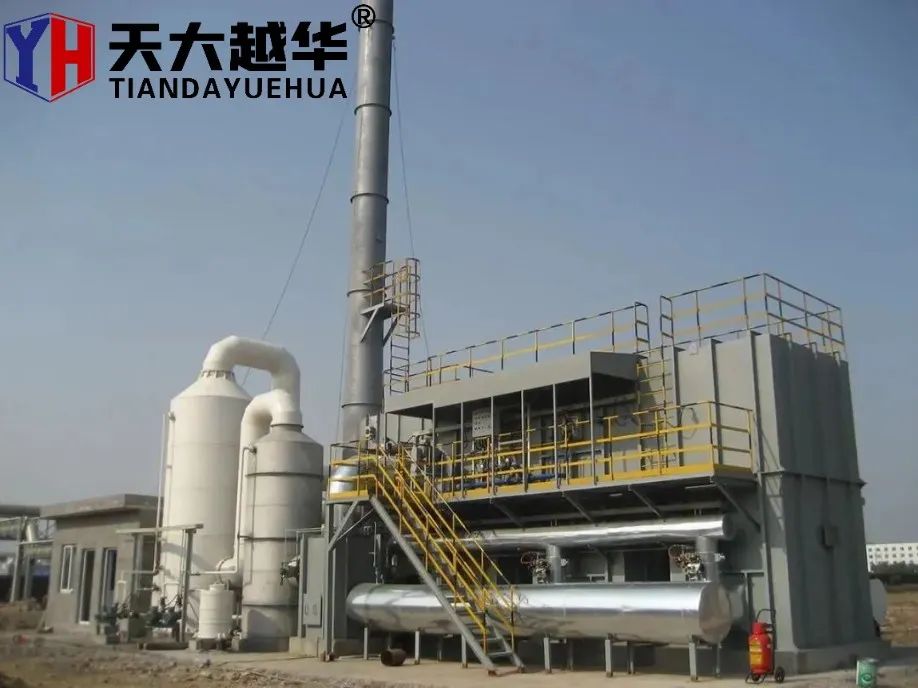Exploring the Technology and Advancements in Regenerative Thermal Oxidizers
2024-07-16
Introduction
As industries strive to meet stringent environmental regulations and reduce their carbon footprint, Regenerative Thermal Oxidizers (RTOs) have become an essential technology for air pollution control. This blog delves into the technological advancements in RTOs, their operational advantages, and their critical role in sustainable industrial practices.
The Technology Behind RTOs
Regenerative Thermal Oxidizers (RTOs) are advanced air pollution control devices designed to efficiently destroy volatile organic compounds (VOCs) and hazardous air pollutants (HAPs). Their innovative design and operation make them a preferred choice for many industrial applications.
Key Technological Features of RTOs
1. Regenerative Heat Exchange
The core technology of RTOs lies in their regenerative heat exchange system, which consists of ceramic heat recovery chambers. These chambers absorb and store heat from the oxidized exhaust gases, which is then transferred to the incoming polluted air. This process significantly reduces the energy required to maintain high oxidation temperatures.
2. Advanced Control Systems
Modern RTOs are equipped with sophisticated control systems that monitor and adjust operational parameters in real-time. These systems ensure optimal performance, energy efficiency, and compliance with environmental regulations. Key features include:
- Automated Temperature Control: Maintains precise combustion temperatures for efficient pollutant destruction.
- Flow Management: Adjusts air flow rates to match varying process conditions, ensuring consistent performance.
- Diagnostic and Monitoring Tools: Provide real-time data on system performance, enabling proactive maintenance and troubleshooting.
3. Enhanced Burners and Combustion Technology
The burners used in RTOs are designed for high efficiency and low emissions. They provide the necessary heat for the oxidation process while minimizing fuel consumption and pollutant formation. Innovations in burner technology have led to:
- Low NOx Burners: Reduce the formation of nitrogen oxides (NOx), a common air pollutant.
- High Turndown Ratios: Allow for efficient operation across a wide range of conditions, from low to high pollutant concentrations.
Operational Advantages of RTOs
1. High Thermal Efficiency
The regenerative heat exchange process in RTOs can achieve thermal efficiencies of up to 95%. This high efficiency translates to lower fuel consumption and reduced operational costs, making RTOs economically attractive for long-term use.
2. Scalability and Flexibility
RTOs are available in various sizes and configurations to meet the needs of different industries. Their modular design allows for easy scalability, accommodating changes in production capacity and pollutant load. This flexibility ensures that RTOs can adapt to evolving industrial requirements.
3. Low Maintenance Requirements
RTOs are designed for durability and reliability, with minimal maintenance needs. The use of high-quality materials and robust construction reduces wear and tear, while advanced control systems enable predictive maintenance, minimizing downtime and repair costs.
4. Compliance with Environmental Regulations
RTOs help industries comply with stringent air quality standards by achieving high destruction efficiencies for VOCs and HAPs. Their proven performance and regulatory acceptance make them a trusted solution for environmental compliance.
Recent Advancements in RTO Technology
1. Improved Ceramic Media
Advancements in ceramic media have enhanced the heat recovery capabilities of RTOs. New materials offer higher heat transfer rates, increased durability, and resistance to thermal shock, further improving the efficiency and lifespan of RTO systems.
2. Energy Recovery Solutions
Innovations in energy recovery have led to the development of hybrid systems that integrate RTOs with other technologies, such as heat exchangers and waste heat boilers. These systems maximize energy recovery and reduce overall energy consumption, contributing to more sustainable industrial operations.
3. Digitalization and IoT Integration
The integration of digital technologies and the Internet of Things (IoT) has transformed RTO operations. IoT-enabled RTOs can monitor performance metrics, detect anomalies, and optimize operations remotely. This connectivity enhances operational efficiency, reduces maintenance costs, and improves overall system reliability.
Applications and Case Studies
Pharmaceutical Industry
Pharmaceutical manufacturing involves complex chemical processes that generate VOC emissions. RTOs have been successfully implemented to control these emissions, ensuring compliance with environmental regulations and protecting public health.
Printing and Coating Industry
The printing and coating industry produces significant VOC emissions from solvent-based inks and coatings. RTOs have been effective in reducing these emissions, contributing to cleaner air and improved workplace safety.
Automotive Manufacturing
Automotive manufacturing processes, such as painting and surface treatment, generate VOCs and HAPs. RTOs are used to treat exhaust air from these processes, ensuring regulatory compliance and reducing the environmental impact of automotive production.
Conclusion
Regenerative Thermal Oxidizers (RTOs) represent a critical technology for air pollution control in various industries. Their advanced design, high efficiency, and adaptability make them an essential tool for reducing VOC and HAP emissions. As technological advancements continue to enhance their performance and capabilities, RTOs will play an increasingly vital role in promoting sustainable industrial practices and protecting the environment.



